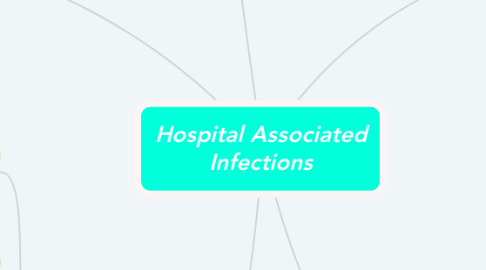
1. Research
1.1. CDC supports innovative research to help prevent HAIs
1.2. In 2015the CDC met and discussed environmental hygiene in healthcare
1.3. The CDC does everything it can to give out multiple opportunities for organizations to perform research and create prevention projects
2. Statistics
2.1. Nationally there was a 1-13% decrease in specific HAI types from 2016 to 2017
2.2. On any given day 1 in 31 patients develops an HAI
2.3. In 2015 an estimated 687,000 HAIs developed in patients in acute care hospitals and about 72,000 of those died during their hospital stay
3. Disease/Organism
3.1. Acinetobacter
3.1.1. Commonly found in soil and water
3.1.2. Accounts for about 80% of infections
3.1.3. Rarely occurs outside of healthcare settings
3.2. Clostridium difficile
3.2.1. Causes diarrhea and inflammation of the colon (colitis)
3.2.2. Overuse of antibiotics is the most important risk for getting this infection
3.3. Klebsiella
3.3.1. Organism that can cause pneumonia, bloodstream infections, wound or surgical site infections and meningitis
3.3.2. Normally found in the human intestines and stool
3.4. Norovirus
3.4.1. Group of viruses that cause gastroenteritis (inflammation of the lining of the stomach and intestines
3.4.2. Young children, elderly and people with medical illnesses are most at risk
3.4.3. Not affected by treatment with antibiotic
4. Types
4.1. Central Line-associated Bloodstream Infection (CLABSI)
4.2. Catheter-associated Urinary Tract Infections (CAUTI)
4.3. Surgical Site Infections (SSI)
4.4. Ventilator-associated Pneumonia (VAP)
5. Prevention
5.1. Targeted Assessment for Prevention (TAP) strategy
5.2. Use of PPE to prevent spread of organisms
5.3. Infection control assessment tools
5.3.1. Healthcare personnel infection Prevention competency
5.3.2. Healthcare Personnel IP competency-based training

